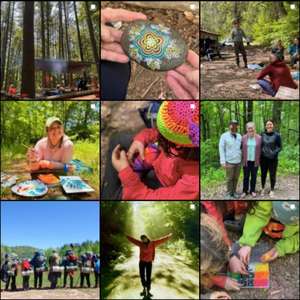Young Adult Program FAQ
What is the average length of stay?
The typical length of stay for the young adult program is 9-13 weeks. This can be a little longer than the average stay compared to our students in the Blue Ridge Adolescent Program, because one of Emerald Arrow’s main goals is to set up students for success after wilderness. There are so many options for young adults graduating from Emerald Arrow: whether they choose to live independently at college, or shift into a transitional living program, it is vital that we ensure students feel confident and competent when they take their next steps.
What does a typical week/day look like?
Sometimes we joke with students that every day is different, and every day is the same! While each day typically consists of camp tasks, personal time, journaling, therapeutic assignments, group meal times, and fun, daily activities and experiences largely depend upon what goals are set. For example, a day in which we are hiking to a new location may look much different from a day full of sessions and groups with the therapist.
Although the rhythm of each day is different depending upon individual and group needs, therapy is woven into every aspect of your experience in Emerald Arrow. Therapy is happening in different ways all the time— not just during your sessions with the Primary Therapist. In addition to being supported by the group, you will journal, read books, work on therapeutic assignments, and learn primitive skills like bow drilling and carving. You will practice yoga and mindfulness, create art with your hands, and hike with a big pack on your back. You will become a mentor and leader for your peers, and practice new physical and therapeutic skills. This practice and work is what ultimately leads to change.
Living outside- is it for me? What if I can’t do it?
The idea of living outside is much more challenging for students (and parents) than it winds up being in practice. Most of our students are not experienced in the outdoors, and many have never even gone camping before they step foot in the National Forest we inhabit. Wilderness living can be challenging, but the truth is that within a few days, most students have gotten used to being outside, and are surprised by how physically and emotionally recharged they feel. With each day that you are here, developing healthy habits while you live outdoors, you are developing self-reliance as well as resiliency. Some days will be tougher than others but you will be supported by your group and field instructors and Primary Therapist and you will learn how to take care of yourself (and your group, too) in the wilderness. You will quickly learn you are capable and that you can actually thrive out here. You will also come to appreciate the beauty, the night sky, the solitude, and the tranquility.
What if I want to leave?
The short answer is that if you want to leave, you can leave. The more intricate answer is that we want to challenge you to complete the journey you have committed to – while fully acknowledging that this can be hard at times. Most families will have an expectation of completion, and are committed to allowing their child to choose, but are not willing to help their child leave the program early.
The primary consideration in this situation is your safety as well as the long-term effect of the decisions made in this process. We ask students who want to leave to slow down the process, in order to understand what’s coming up and contemplate where there may be opportunities to do something different. Our goal is to support you to be best prepared for living a sustainable, healthy life that is aligned with your values and purpose.
What are the other students like?
Like You! Part of our admissions process is about creating a group of students that have similar stories and will be able to find common ground in their work together and connect around their experiences. Some students struggle with anxiety and depression, some have histories of substance abuse, and some have started college but have not been able to complete their coursework for various reasons. We accept a diverse array of young adults. Exceptions to this rule are people with significant histories of violence, or anyone who is in need of a different level of care.
How often do therapists visit the field?
Our therapist will visit the group 2 days per week: Typically, Tuesday and Wednesday. During this time, she will engage in individual, group, and milieu therapy with students. She will collaborate with your staff team to ensure that the individualized work is being done and that therapeutic goals are being met with collective support.
Check out the podcast, Stories From the Field: Demystifying Wilderness Therapy. In particular, check out the episode with Anne Wilzbacher, our Emerald Arrow Therapist!
How is my family involved?
Your family will speak with your therapist weekly. Part of that conversation is about you and your progress, while other parts of that conversation surround how they can best support you.The therapist is involved in helping them understand where you are coming from, and processing with them about whatever comes up. Your family will also engage with you by writing letters back and forth each week.
Parents also have their own work to do: they will have an additional call with a family systems therapist that is not even about you! It’s about them and how they can grow to understand the role they play in your family. These conversations usually lead parents to better support students on the other side of wilderness. Parents also attend a multi-family workshop with their family therapists, which helps them to understand your experience and to better appreciate all the work students do in this process.
What’s the benefit of being in the wilderness? Why not just see a home therapist?
There are so many opportunities that only wilderness can provide. The therapist is part of the experience, but the wilderness itself does so much to guide us. Treatment is individualized to each student so that you receive whatever support you need. There is no cookie-cutter way to go through Emerald Arrow. Some students have asked why the therapist doesn’t visit the field more often. The answer is that we want to encourage students to work with each other and with staff, to gain a greater understanding of how they show up in the world through feedback, goal setting, and team building. Your group in the wilderness will understand where you are in your process and know what your goals are, and together, you will practice building safe, healthy, stable relationships. This provides a more informed and useful setting for when the therapist does arrive.
How will I translate what I learn when I leave?
It’s all about integration. The wilderness is like practice, and “real life” is like the big game. How well can you apply what you’ve been practicing for several weeks of wilderness in the big game of life? As long as you are invested and engaged, this experience will help you solve unexpected problems, work with people from all walks of life, take accountability for yourself, figure out what makes you feel alive, and lead you towards standing in alignment with your values. All of these components are applicable to life inside and outside of wilderness.
Am I losing my freedom in this process? Is wilderness meant to give me a harsh reality check?
Wilderness is not a punishment. This is true in both intention and practice. There is nothing punitive about this experience, and this fact is usually overwhelmingly evident by the end of your first day. There is a lot of misunderstanding about what therapeutic wilderness programs actually are, and much of it is perpetuated by otherwise bright, caring and professional treatment providers. We believe that this confusion isn’t malicious, but resulting from a lack of exposure in many cases. We do intensive therapeutic work that requires emotional vulnerability, and that cannot be achieved in an environment where students feel as though they are being punished or are unsafe.
The kind of transformational, life-changing progress created in wilderness can only be achieved in the context of trusting, secure relationships. In many cases, our students have not experienced the level of emotional safety among peers or adults that they do while participating in Emerald Arrow.
The tricky part is trusting your ability to recreate your safe, healthy experience in the “real world”. Spoiler alert: You can, and you will.
Do I really need this?
The answer to this question is not what you might expect: Everyone needs this. Naturally, we tend to work with young people who are struggling in a variety of ways. This does not, however, imply that the only benefit of this work is for those who have gotten off track. Similarly, one would not suggest that exercise is only for those who are out of shape. High-performing students with no apparent struggles would likely have a similarly life-changing experience after completing our program. Therapeutic work integrated in a wilderness setting has universal benefits – no matter who you are. It is a unique way to begin to build awareness, resilience, self-worth, clarity, and deeper connections with self and others, and it would be extremely difficult to recreate these same breakthroughs in a different environment.

